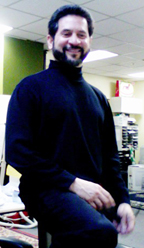by Jay Syrmopoulos
Portland, OR – A pioneering biotechnology startup has launched an online interactive guide that maps the genetic evolution of the cannabis genome, allowing for specific strains of marijuana that are already in the public domain a form of protection from patenting by large biotech firms such as Monsanto.
After two years of collecting samples, sequencing the plant’s DNA and developing the software to allow for a 3-D visualization of the collected data, the company was ready to unveil their long-awaited project.
“Sample collection was a huge part of this process,” Carolyn White, Sales and Marketing Manager at Phylos Bioscience told the Willamette Weekly. “One side was a collaboration with growers, dispensaries and labs to collect modern samples, and the other a process of hunting down ancient landrace strains from all over the world.”
The Portland company, fittingly on 4/20, went online with its interactive guide, which the company calls Galaxy.
According to a report in The New York Times:
“The resulting visualization will offer anyone the ability to easily travel in cyberspace through a three-dimensional projection of the genetic information drawn from sequencing samples of the plant, which is increasingly being legalized for medical and recreational use in states throughout the country…
Phylos has created a colorful 3-D map that visually represents the statistical relationships between different breeds of the plant. The company hopes that having genetic information easily available will help bring order to a business that began underground and is now making a commercial transition.
Over time, the scientists believe, this sort of visual map can be applied to other types of plants, or even to animals.”
“We’ve collected samples from all over the world, and cataloged the genetic information encoded in their DNA,” Dr. Holmes, Phylos’s chief science officer and molecular and evolutionary biologist, in addition to being a co-founder of Phylos Bioscience, told the NY Times, relating the DNA sequencing to an actual bar code in terms of identification and evolutionary relationship relative to other samples.
The data could theoretically help protect the intellectual property rights of growers from potential big business interests, such as Monsanto, from gaining a patent foothold in the growing industry.
Due to the social media attention given to the subject, Monsanto has attempted to refute any interest in producing GMO cannabis, posting on their website that the companies reported interest in GMO marijuana is nothing more than “an Internet rumor.”
Additionally, on April 25, Monsanto spokeswoman Charla Lord told the Willamette Week that the company will not be getting involved in the marijuana business.
“Monsanto has not, is not and has no plans for working on cultivating cannabis,” Lord told WW.
Contrary to the public statements by Lord, White says that he expects companies like Monsanto will attempt to eventually patent cannabis.
“We think Big Pharma and Big Ag will be the primary audience after patents, and it will likely require writing new DNA in to the plant,” White told WW. “None of the folks at Phylos really see patenting as a viable tool for the average breeder.”
Phylos looks to assist in pushing more data into the public domain as a hedge against patenting by large bio-agribusiness as information in the public domain can’t be patented after one year.
“You can’t patent anything that’s been in the public domain longer than a year,” White told WW. “We set out to bring more knowledge and transparency to the industry and that’s still what we’re doing.”
The next step for the innovative company is the launch of a commercial sequencing product to allow for anyone to send in a sample to Phylos and have it sequenced. The sample would be placed into the Galaxy, with the customer being given a detailed analysis of the strains sequenced data.










